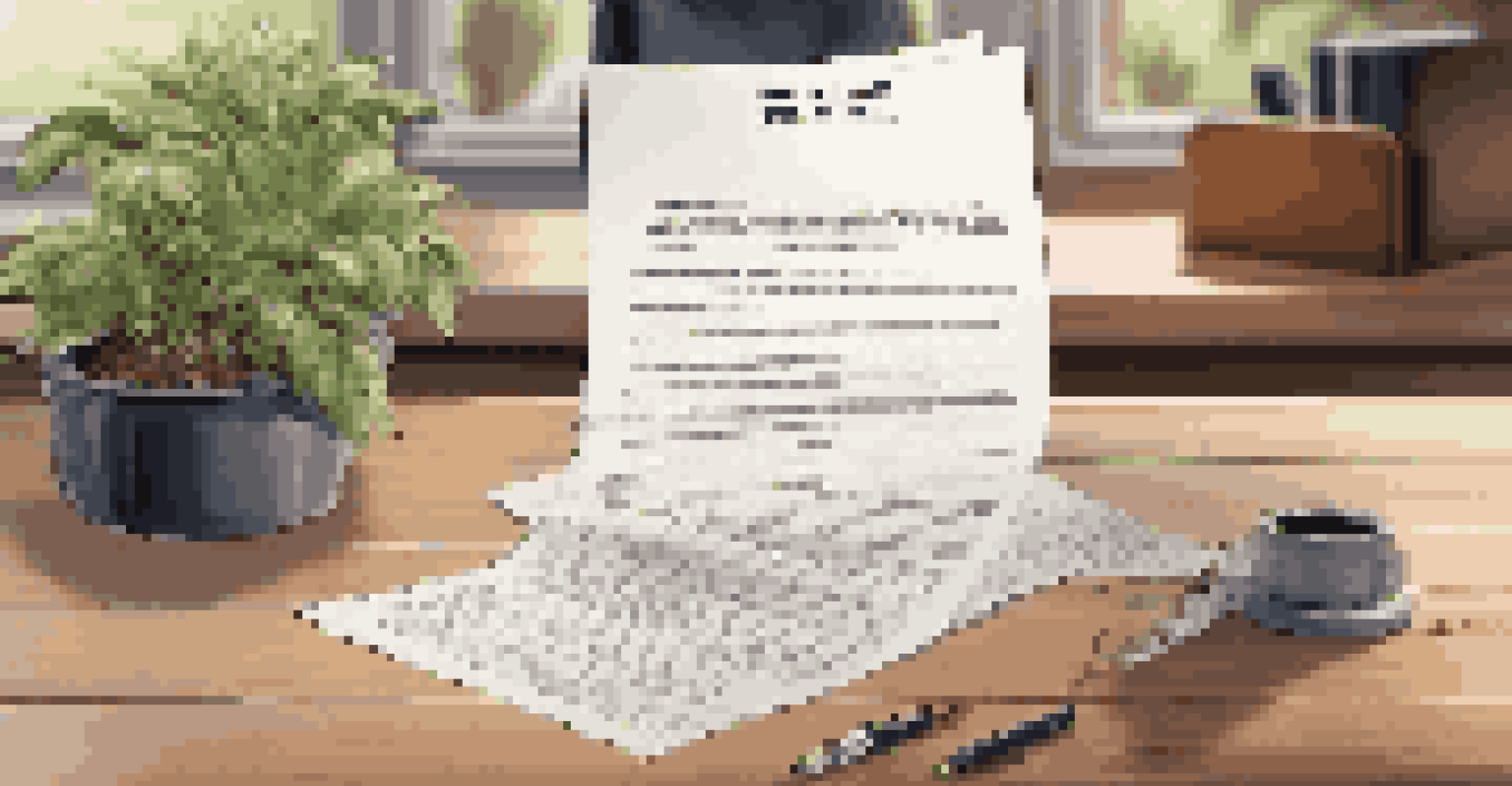Crafting Effective Press Releases to Gain Media Attention

Understanding the Purpose of a Press Release
At its core, a press release is a communication tool designed to inform journalists about newsworthy events. Whether it's a product launch, a company milestone, or a community initiative, a press release can help convey your message to a broader audience. It's essential to recognize that the purpose isn't just to share information, but to generate media coverage that amplifies your message.
A press release is no longer just an announcement; it's a strategic tool to tell your story and connect with your audience.
By understanding the intent behind a press release, you can craft a narrative that resonates with both journalists and their audience. Think of it as a bridge connecting your story to the public narrative. The clearer and more engaging your press release is, the more likely it is to be picked up by the media.
Additionally, a well-crafted press release can enhance your brand's credibility and visibility. When journalists cover your story, it lends authority to your message, reinforcing trust with your audience.
Identifying Your Target Audience and Media Outlets
Before you put pen to paper, it's crucial to identify who you want to reach with your press release. Different media outlets cater to different audiences, so knowing your target demographic can help you choose the right channels. Are you aiming for local newspapers, industry-specific magazines, or social media influencers? Each has its own style and audience.

Once you've pinpointed your audience, research which journalists or publications are likely to be interested in your news. Tailoring your press release to fit the preferences of specific outlets can significantly increase your chances of being featured. Think of this as a targeted marketing strategy; the more relevant your content, the more likely it will resonate.
Purpose of a Press Release
A press release is a tool to inform journalists about newsworthy events and generate media coverage.
Finally, consider how your news ties into larger trends or stories that journalists are already covering. By aligning your press release with current events or popular topics, you can capture attention more effectively.
Crafting a Compelling Headline
Your headline is the first impression your press release will make, so it needs to be eye-catching and informative. A strong headline should encapsulate the essence of your news while piquing curiosity. Think of it as the bait that lures journalists into reading further.
The best press releases are those that tell a story and provide context, inviting journalists to explore deeper.
Aim for a headline that balances creativity with clarity; using strong action verbs can help convey urgency and excitement. For example, instead of saying 'Company X Announces New Product,' try 'Company X Revolutionizes Industry with Launch of Groundbreaking Product.' This not only informs but also engages the reader's interest.
Additionally, keep your headline concise—ideally under 70 characters—to ensure it displays well in search results and social media shares. A punchy, memorable headline can make all the difference in grabbing attention.
Writing an Engaging Lead Paragraph
After your headline, the lead paragraph is where you hook your reader, so make it count. This section should summarize the key points of your press release in a way that answers the who, what, when, where, and why. Think of it as the elevator pitch of your press release.
A well-written lead not only informs but also compels the reader to continue. Use active voice and clear language to convey your message succinctly. For example, instead of saying 'The event will be held on Saturday,' say 'Join us this Saturday for an exciting community event.'
Identify Your Target Audience
Knowing your target audience and relevant media outlets can significantly increase the chances of your press release being featured.
Remember to highlight the most newsworthy aspect of your announcement right at the start. This can be a surprising statistic, a notable quote, or a significant achievement—anything that makes your story stand out in the crowded media landscape.
Including Relevant Quotes for Credibility
Quotes from key stakeholders or industry experts can add depth and credibility to your press release. They serve as a powerful tool to humanize your story and offer a different perspective. A well-placed quote can also highlight the significance of your news, providing emotional resonance.
When crafting quotes, aim for authenticity. They should reflect genuine thoughts and feelings rather than sounding scripted or overly promotional. For instance, instead of a generic statement, consider a quote that showcases enthusiasm or personal connection to the news.
Additionally, quotes can be used to reinforce your key messages. By strategically placing them in your press release, you can emphasize important points while adding a layer of insight that enhances the overall narrative.
Structuring the Body of Your Press Release
The body of your press release should provide more detailed information about your announcement while maintaining clarity and flow. Start with the most critical information and gradually move to supporting details. This inverted pyramid style ensures that even if readers only skim, they'll grasp the essential points.
Use subheadings, bullet points, or short paragraphs to break up the text and make it more digestible. This not only improves readability but also keeps the reader engaged. Remember, journalists often have limited time, so presenting information in a clear manner can work in your favor.
Crafting Compelling Content
Engaging headlines and lead paragraphs, along with relevant quotes and structured content, are key to capturing attention.
Lastly, ensure that the body answers any potential questions a journalist might have. Anticipate their needs for context and background information, and include links or references to additional resources when appropriate.
Ending with a Strong Boilerplate and Contact Info
A boilerplate is a brief description of your company or organization and should be included at the end of your press release. It acts as a standard summary, providing journalists with essential background information. Think of it as your brand’s elevator pitch—concise but informative.
Your boilerplate should include crucial details like your company’s mission, history, and any notable achievements. This context can help journalists understand who you are and why your news matters. Keep it between 100-150 words to ensure it is informative yet succinct.

Finally, don’t forget to include contact information for someone who can answer questions or provide additional details. This could be a PR representative or a relevant team member. Having a clear point of contact can facilitate follow-up inquiries and enhance media engagement.